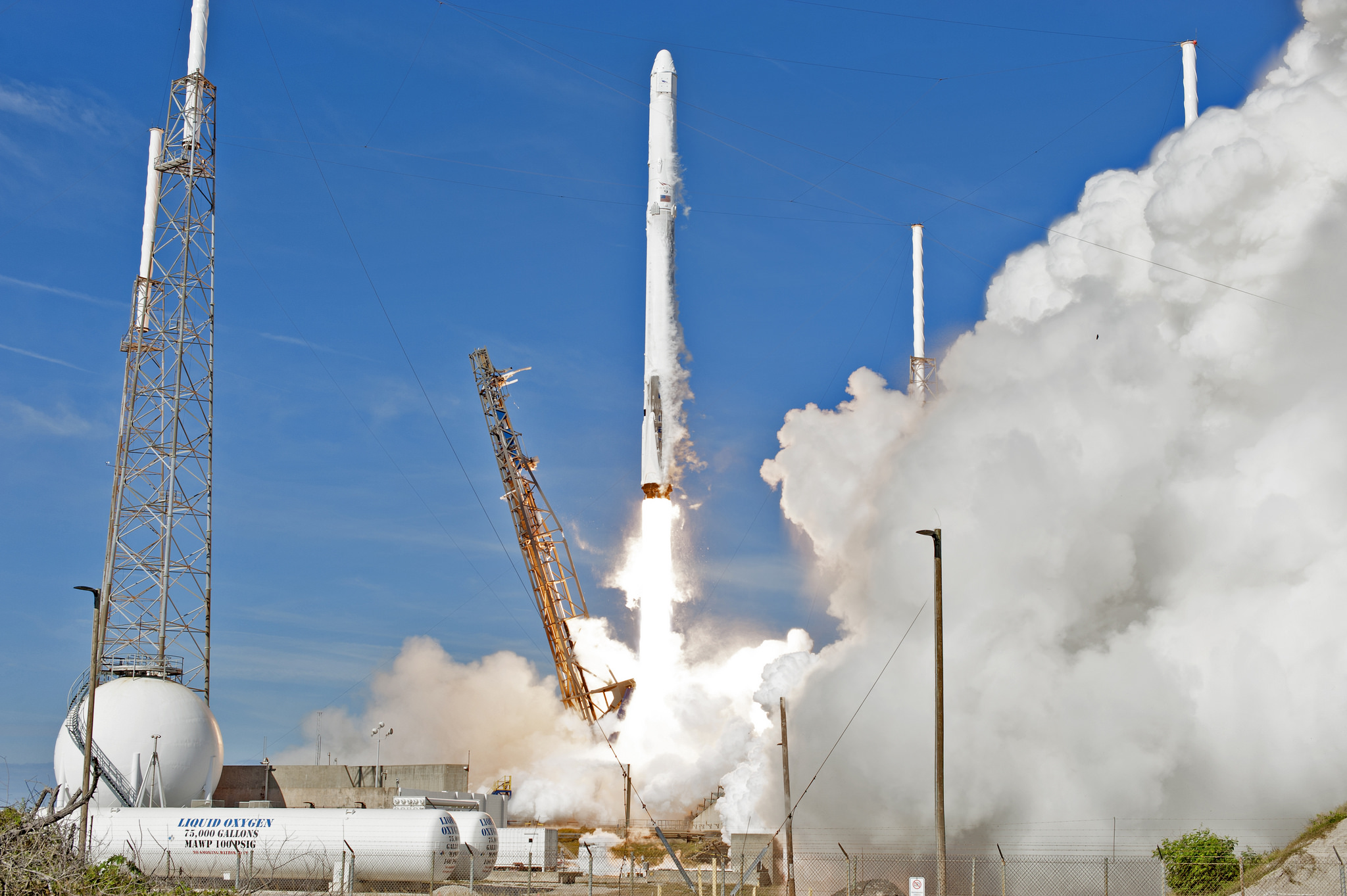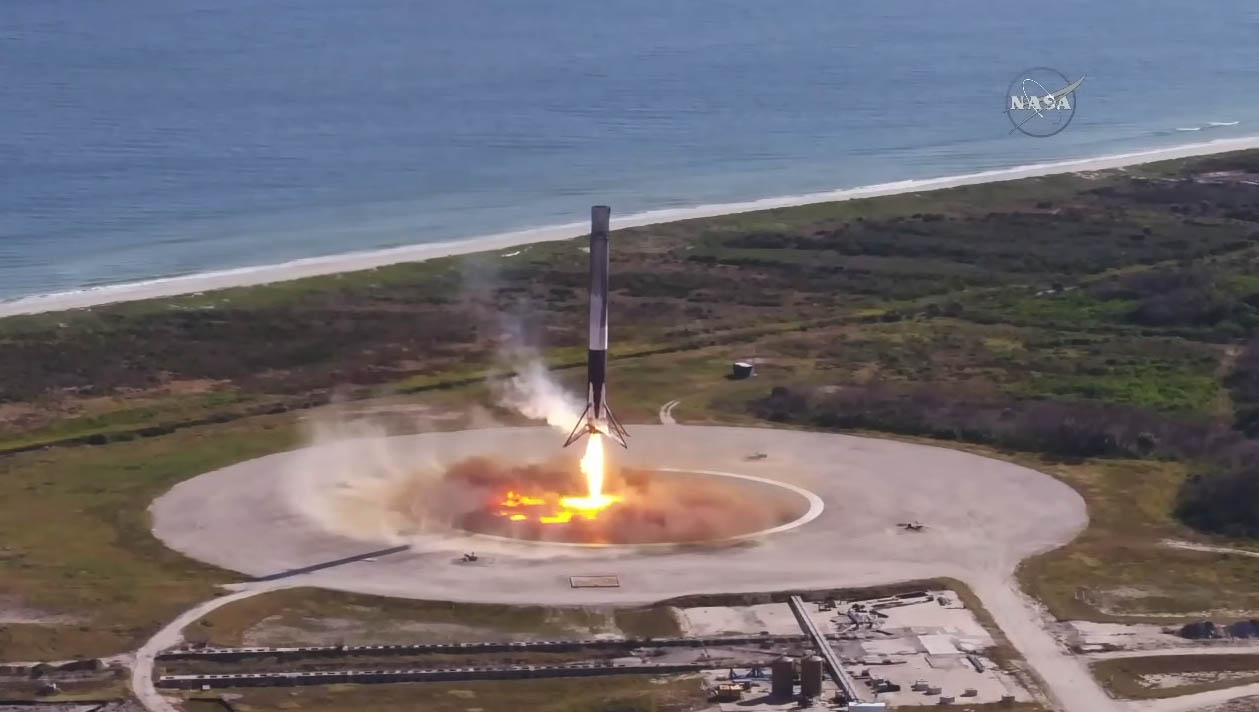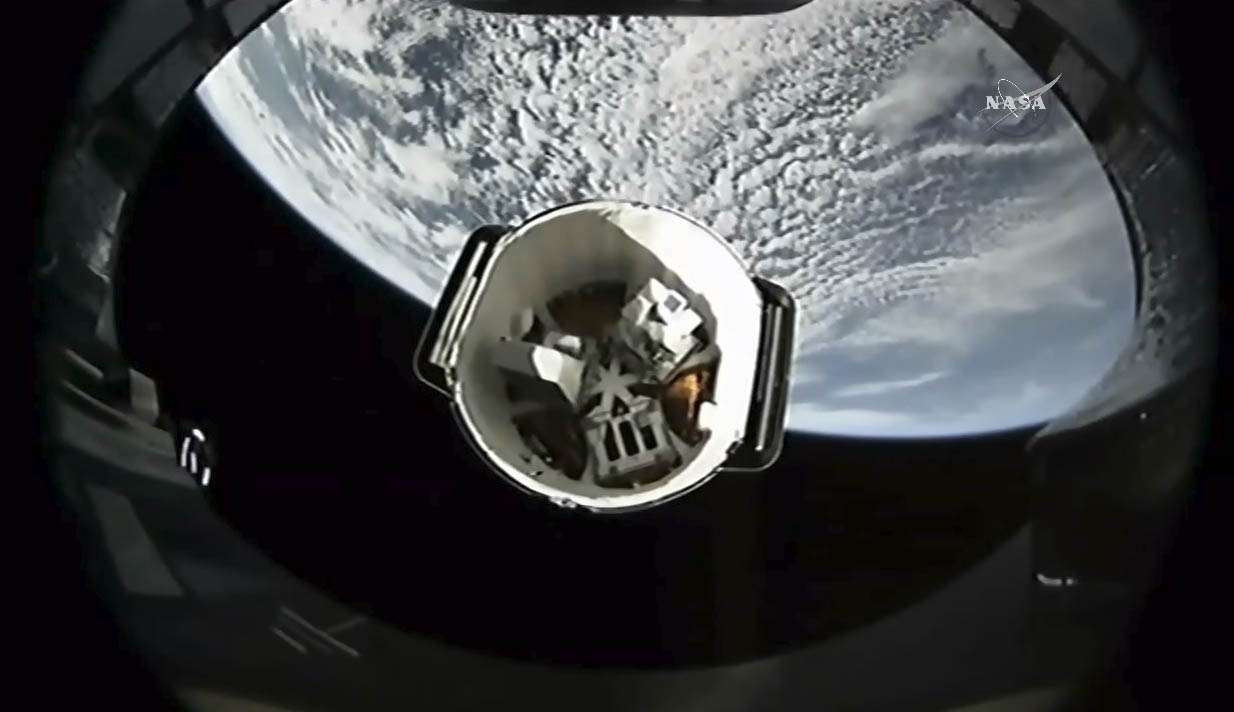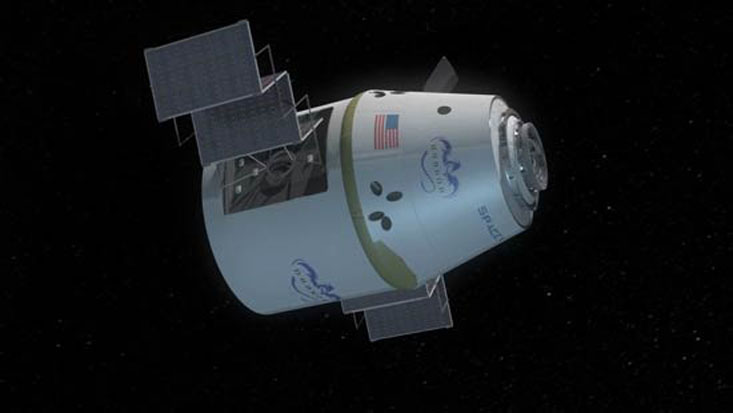SpaceX Launches (and Lands) Used Rocket on Historic NASA Cargo Mission
SpaceX launched and landed a used rocket today (Dec. 15), pulling off yet another spaceflight double play during a delivery mission for NASA that gets the company a big step closer to its goal of complete reusability.
SpaceX's two-stage Falcon 9 rocket lifted off today at 10:36 a.m. EST (1536 GMT) from Cape Canaveral Air Force Station in Florida, sending the company's robotic Dragon capsule on a resupply run to the International Space Station (ISS) that just might include some Christmas presents for the station’s crew.
Both the rocket and its payload have previous spaceflight experience: This Dragon visited the orbiting lab back in April 2015, and the Falcon 9 first stage launched a different Dragon toward the ISS in June 2017. Never before had SpaceX launched a pre-flown spacecraft atop a pre-flown rocket — and never before had the company employed a used rocket on a cargo mission for NASA. [See more photos of SpaceX's Falcon 9/Dragon launch for NASA here!]

The agency approved the use of a pre-flown booster after conducting an extensive review of the risks involved, NASA officials said.
"We're very comfortable that the risk posture on this vehicle is not significantly greater than [on] a new booster," Kirk Shireman, NASA's ISS program manager, said in a prelaunch briefing Monday (Dec. 11). "We think of it as equivalent risk."
Less than 10 minutes after liftoff today, the Falcon 9 first stage came back for another pinpoint touchdown — the second of its operational life — at Landing Zone 1, a SpaceX facility at Cape Canaveral. SpaceX has now pulled off 20 first-stage landings during orbital flights and re-flown landed boosters on four separate occasions.
Such activities are part of SpaceX's effort to develop fully and rapidly reusable spaceflight systems, a key priority of the company and its billionaire founder and CEO, Elon Musk.
Get the Space.com Newsletter
Breaking space news, the latest updates on rocket launches, skywatching events and more!

"In the long run, reusability is going to significantly reduce the cost of access to space, and that's what's going to be required to send future generations to explore the universe," SpaceX's Dragon mission manager Jessica Jensen said during Monday's briefing. [Reusable Rocket Systems: How They Work (Infographic)]
"We want to be able to send thousands of people into space, not just tens," Jensen added. "Reusability is a very key part of that, and we're excited, because tomorrow is just one step closer to that." (The Falcon 9 was originally scheduled to launch Tuesday, Dec. 12, but SpaceX delayed it by a day to have more time for ground-systems checks, and then again by two additional days to conduct further inspection and cleaning after particles were discovered in the rocket's second-stage fuel system.)
As the Falcon 9's first stage was landing today, the rocket's (expendable) second stage kept powering the Dragon to orbit. If everything goes according to plan, the capsule will get to the ISS on Sunday (Dec. 17), delivering about 4,800 lbs. (2,180 kilograms) of scientific hardware and other supplies to the orbiting lab.
The science gear aboard the Dragon is a diverse and interesting lot. For example, there's a sensor designed to measure just how much solar energy hits Earth, and another one that aims to gauge the amount of space junk whizzing around the planet in the ISS' orbit.

Another experiment seeks to determine the least amount of gravitational pull that plants can detect. The results could help settlers grow crops on the moon and Mars, project leaders have said.
Also aboard the Dragon is a roughly microwave-size machine built by California-based startup Made In Space that will make exotic ZBLAN optical fiber aboard the ISS. ZBLAN has the potential to be much higher-performance than standard silica optical fiber, company representatives have said. But it's tough to make usable ZBLAN fiber here on Earth because our planet's gravitational pull induces crystal impurities in the stuff, they added.
Made In Space hopes to sell large amounts of space-produced ZBLAN fiber on Earth. The newly launched machine will help the company determine just how realistic that goal is, Made In Space representatives said.

"This'll be the first time that we've leveraged the space environment to manufacture a product in space that, because it was manufactured there, it's got these amazing properties that are actually useful and commercially viable — we hope — down on the ground," Made In Space CEO Andrew Rush said in a different pre-launch briefing Monday.
The folks who packed Dragon may have squeezed a few stocking stuffers for the ISS crewmembers in as well.
"I cannot confirm nor deny the presence of Christmas presents," Shireman said. "There are crew care packages, and as program manager I don't have to go inspect all those. So it wouldn't surprise me, but I can't say for certain."
The Falcon 9 lifted off today from Launch Complex 40 at Cape Canaveral. This was the first launch in more than a year from Pad 40, which was damaged by a Falcon 9 explosion during a routine preflight test on Sept. 1, 2016.
Follow Mike Wall on Twitter @michaeldwall and Google+. Follow us @Spacedotcom, Facebook or Google+. Originally published on Space.com.
Join our Space Forums to keep talking space on the latest missions, night sky and more! And if you have a news tip, correction or comment, let us know at: community@space.com.

Michael Wall is a Senior Space Writer with Space.com and joined the team in 2010. He primarily covers exoplanets, spaceflight and military space, but has been known to dabble in the space art beat. His book about the search for alien life, "Out There," was published on Nov. 13, 2018. Before becoming a science writer, Michael worked as a herpetologist and wildlife biologist. He has a Ph.D. in evolutionary biology from the University of Sydney, Australia, a bachelor's degree from the University of Arizona, and a graduate certificate in science writing from the University of California, Santa Cruz. To find out what his latest project is, you can follow Michael on Twitter.









